-
 Bitcoin
Bitcoin $118000
0.31% -
 Ethereum
Ethereum $3560
-0.99% -
 XRP
XRP $3.435
-0.76% -
 Tether USDt
Tether USDt $1.000
-0.01% -
 BNB
BNB $731.8
-0.96% -
 Solana
Solana $177.3
-0.64% -
 USDC
USDC $0.9999
-0.04% -
 Dogecoin
Dogecoin $0.2419
2.59% -
 TRON
TRON $0.3205
-1.58% -
 Cardano
Cardano $0.8278
0.18% -
 Hyperliquid
Hyperliquid $44.64
0.22% -
 Stellar
Stellar $0.4648
-1.54% -
 Sui
Sui $3.794
-2.00% -
 Chainlink
Chainlink $18.31
2.04% -
 Hedera
Hedera $0.2672
-0.49% -
 Avalanche
Avalanche $24.26
1.57% -
 Bitcoin Cash
Bitcoin Cash $506.9
-1.63% -
 Shiba Inu
Shiba Inu $0.00001474
-0.40% -
 UNUS SED LEO
UNUS SED LEO $8.991
0.23% -
 Litecoin
Litecoin $103.8
0.28% -
 Toncoin
Toncoin $3.183
-2.68% -
 Polkadot
Polkadot $4.298
-0.09% -
 Uniswap
Uniswap $10.08
-1.02% -
 Monero
Monero $325.5
0.60% -
 Ethena USDe
Ethena USDe $1.001
-0.01% -
 Bitget Token
Bitget Token $4.886
-1.39% -
 Pepe
Pepe $0.00001311
-1.56% -
 Dai
Dai $1.000
0.01% -
 Aave
Aave $316.5
-1.08% -
 Cronos
Cronos $0.1219
0.89%
What are the risks of liquid staking?
Liquid staking lets users earn rewards on staked crypto while maintaining liquidity through tokenized assets, but it carries risks like smart contract flaws, slashing, and market volatility.
Jul 19, 2025 at 04:36 pm
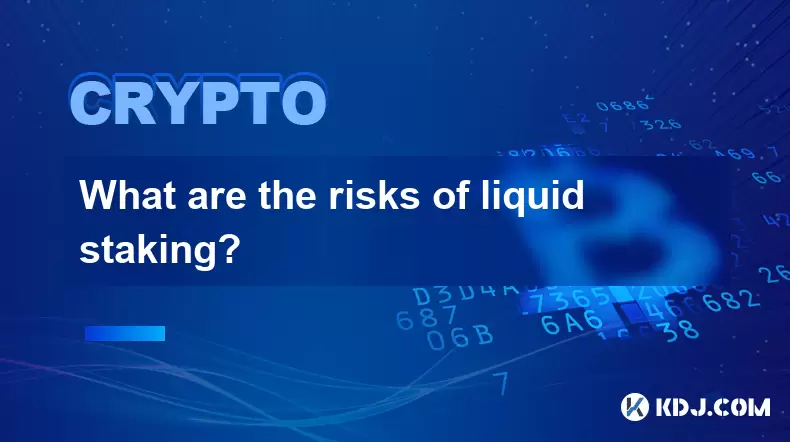
Understanding Liquid Staking in the Cryptocurrency Ecosystem
Liquid staking is a mechanism that allows users to stake their proof-of-stake (PoS) cryptocurrencies while retaining liquidity. When users stake their tokens, they typically lock them up for a certain period. However, with liquid staking, users receive a tokenized version of their staked assets, often referred to as liquid staking derivatives (LSDs), which can be used across decentralized finance (DeFi) platforms. This innovation has gained traction in ecosystems like Ethereum, Solana, and Cosmos.
While liquid staking enhances capital efficiency, it introduces a unique set of risks that users should carefully consider before participating.
Smart Contract Vulnerabilities and Exploits
One of the primary risks associated with liquid staking is exposure to smart contract vulnerabilities. Since liquid staking platforms rely heavily on smart contracts to issue, manage, and redeem staked assets, any flaws in the code can be exploited by malicious actors.
- Bugs in contract logic may lead to unintended behavior, such as incorrect issuance of staking derivatives or mismanagement of rewards.
- Reentrancy attacks have historically affected DeFi protocols, and liquid staking platforms are not immune to such threats.
- Upgrades and governance decisions can introduce new risks if not thoroughly audited or if control is centralized.
Users should ensure that the platform they are using has undergone multiple third-party audits, has a transparent codebase, and maintains a responsible disclosure program for security researchers.
Slashing Risks and Validator Misbehavior
In PoS blockchains, validators are responsible for maintaining network integrity. If a validator misbehaves—by double-signing, going offline, or failing to follow protocol rules—their staked assets may be slashed, meaning a portion of the staked tokens is permanently removed as a penalty.
When users participate in liquid staking, they often delegate their tokens to a centralized or semi-centralized validator set. If any of these validators are slashed, the loss is typically passed on to the stakers, potentially reducing the value of their staked assets and the corresponding liquid derivatives.
- Validator centralization increases the risk of mass slashing events.
- Lack of transparency in how slashing is handled can lead to unexpected losses.
- Insurance mechanisms offered by some platforms may not fully cover losses in extreme cases.
This risk underscores the importance of evaluating the validator distribution and risk mitigation strategies of a liquid staking provider.
Impermanent Loss in DeFi Integrations
Liquid staking derivatives (LSDs), such as stETH or rETH, are often used in liquidity pools, yield strategies, and lending protocols. While this can boost returns, it also exposes users to impermanent loss, especially when providing liquidity in pools that include both the native token and its staked derivative.
- Price divergence between the staked token and the LSD can lead to reduced value when withdrawing liquidity.
- Volatility in LSD premiums can create arbitrage opportunities but also increase exposure to market swings.
- Lack of peg stability in some LSDs can cause temporary or even permanent losses depending on the market dynamics.
Users engaging in DeFi activities with LSDs should monitor price ratios, pool compositions, and slippage parameters to minimize potential losses.
Centralization and Custodial Risks
Many liquid staking platforms operate with a degree of centralization, especially when it comes to managing validators or issuing staking derivatives. This introduces custodial risks, where users must trust the platform to act honestly and competently.
- Private key control is often retained by the platform, which contradicts the core principle of self-custody in blockchain.
- Governance centralization can lead to unilateral decisions that negatively affect stakers.
- Exit fraud or mismanagement during network upgrades can lock users out of their assets.
To mitigate this risk, users should consider platforms that offer non-custodial staking options, transparent validator operations, and open-source governance models.
Regulatory and Compliance Uncertainties
The regulatory landscape for staking and DeFi is still evolving. Liquid staking derivatives may be classified as securities or financial instruments depending on jurisdiction, which could trigger compliance obligations or restrictions.
- Regulatory crackdowns could lead to the shutdown or restriction of certain liquid staking services.
- Tax implications of earning staking rewards and using LSDs in DeFi are not always clear and may vary by country.
- KYC/AML requirements might be imposed on platforms, limiting accessibility for anonymous users.
Stakers should stay informed about local regulations and consider consulting legal or tax professionals before engaging in liquid staking activities.
Frequently Asked Questions
Q: Can I unstake my tokens anytime with liquid staking?
A: While liquid staking allows you to trade or use your staked assets freely via derivatives, the actual unstaking process depends on the underlying blockchain’s withdrawal mechanics. Some networks may impose a waiting period or require an unbonding period before funds can be withdrawn.
Q: Are all liquid staking platforms the same?
A: No, they differ in terms of validator selection, fee structures, tokenomics, and security practices. Users should compare platforms based on transparency, decentralization level, and historical performance before choosing one.
Q: How do I track my staking rewards with liquid staking?
A: Most platforms automatically adjust the exchange rate between the staked token and the derivative, reflecting accrued rewards over time. You can track your rewards by monitoring the balance of your LSD tokens, which should increase relative to the original staked asset.
Q: Is liquid staking suitable for beginners?
A: Liquid staking involves technical and financial risks, including exposure to DeFi protocols and smart contract vulnerabilities. Beginners are advised to start with small amounts, thoroughly research platforms, and understand the mechanics of staking derivatives before committing significant capital.
Disclaimer:info@kdj.com
The information provided is not trading advice. kdj.com does not assume any responsibility for any investments made based on the information provided in this article. Cryptocurrencies are highly volatile and it is highly recommended that you invest with caution after thorough research!
If you believe that the content used on this website infringes your copyright, please contact us immediately (info@kdj.com) and we will delete it promptly.
- American Eagle Palladium Coin Set for September 4 Release: What to Expect
- 2025-07-20 00:35:12
- FloppyPepe: Could This Meme Coin Be Your Ticket to Crypto Millionaire Status with a 15,800% ROI?
- 2025-07-20 00:50:12
- Ethereum's 2025 ATH: Could These 20x Tokens Be Your Golden Ticket?
- 2025-07-20 00:35:12
- Solana, Altcoin Bets, and the Next Big Thing: What's the Play?
- 2025-07-20 01:15:12
- BlockDAG's NO VESTING PASS: A 2025 Crypto Game Changer?
- 2025-07-20 01:15:12
- Crypto Millionaires: Riding the Bull Market Wave
- 2025-07-20 01:15:13
Related knowledge
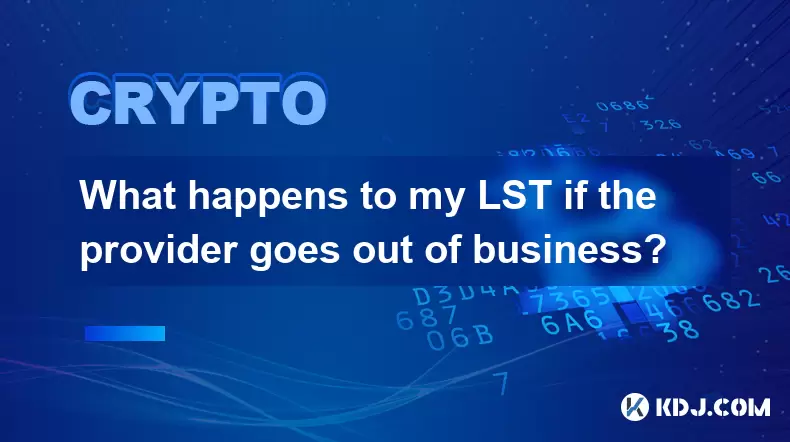
What happens to my LST if the provider goes out of business?
Jul 19,2025 at 10:21pm
Understanding LST and Its Dependence on ProvidersWhen you stake your Ethereum (ETH) through a Liquid Staking Token (LST) provider, you receive a token...

Are there insurance options for liquid staking?
Jul 19,2025 at 06:08pm
Understanding Liquid Staking and Its RisksLiquid staking is a process where users stake their cryptocurrency assets to participate in network validati...

How to build a DeFi strategy with LSTs
Jul 19,2025 at 07:07pm
Understanding LSTs and Their Role in DeFiLSTs, or Liquid Staking Tokens, are derivative tokens that represent staked assets on a proof-of-stake (PoS) ...
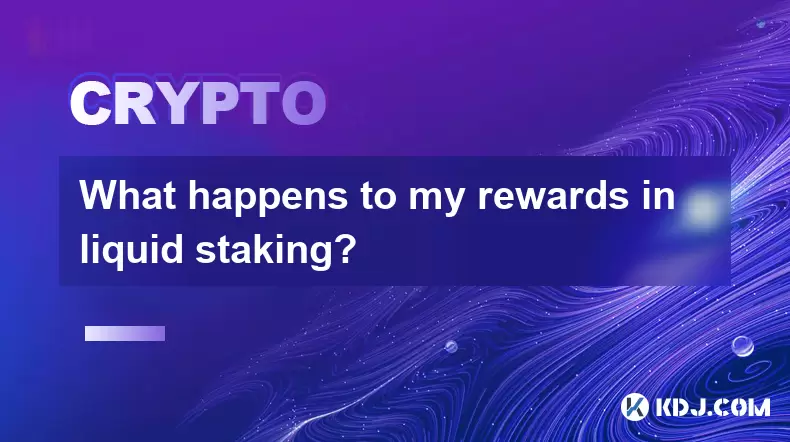
What happens to my rewards in liquid staking?
Jul 19,2025 at 12:21pm
Understanding Liquid Staking and Its MechanicsLiquid staking is a mechanism in the cryptocurrency ecosystem that allows users to stake their tokens wh...
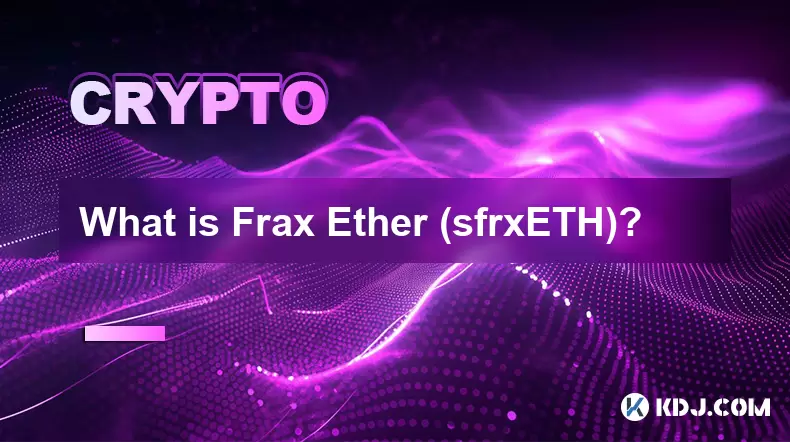
What is Frax Ether (sfrxETH)?
Jul 19,2025 at 10:08am
Understanding Frax Ether (sfrxETH)Frax Ether (sfrxETH) is a derivative token within the Frax Finance ecosystem, which is a decentralized finance (DeFi...
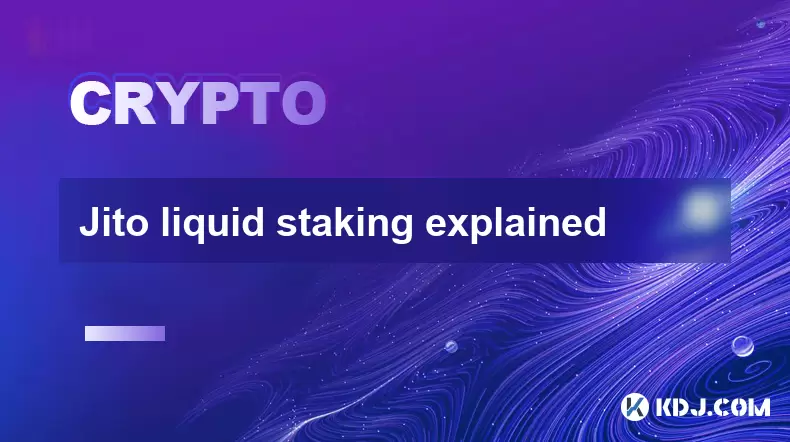
Jito liquid staking explained
Jul 19,2025 at 08:08pm
What Is Jito Liquid Staking?Jito liquid staking is a decentralized staking solution that allows users to stake their assets while maintaining liquidit...

What happens to my LST if the provider goes out of business?
Jul 19,2025 at 10:21pm
Understanding LST and Its Dependence on ProvidersWhen you stake your Ethereum (ETH) through a Liquid Staking Token (LST) provider, you receive a token...

Are there insurance options for liquid staking?
Jul 19,2025 at 06:08pm
Understanding Liquid Staking and Its RisksLiquid staking is a process where users stake their cryptocurrency assets to participate in network validati...

How to build a DeFi strategy with LSTs
Jul 19,2025 at 07:07pm
Understanding LSTs and Their Role in DeFiLSTs, or Liquid Staking Tokens, are derivative tokens that represent staked assets on a proof-of-stake (PoS) ...

What happens to my rewards in liquid staking?
Jul 19,2025 at 12:21pm
Understanding Liquid Staking and Its MechanicsLiquid staking is a mechanism in the cryptocurrency ecosystem that allows users to stake their tokens wh...

What is Frax Ether (sfrxETH)?
Jul 19,2025 at 10:08am
Understanding Frax Ether (sfrxETH)Frax Ether (sfrxETH) is a derivative token within the Frax Finance ecosystem, which is a decentralized finance (DeFi...

Jito liquid staking explained
Jul 19,2025 at 08:08pm
What Is Jito Liquid Staking?Jito liquid staking is a decentralized staking solution that allows users to stake their assets while maintaining liquidit...
See all articles

























































































